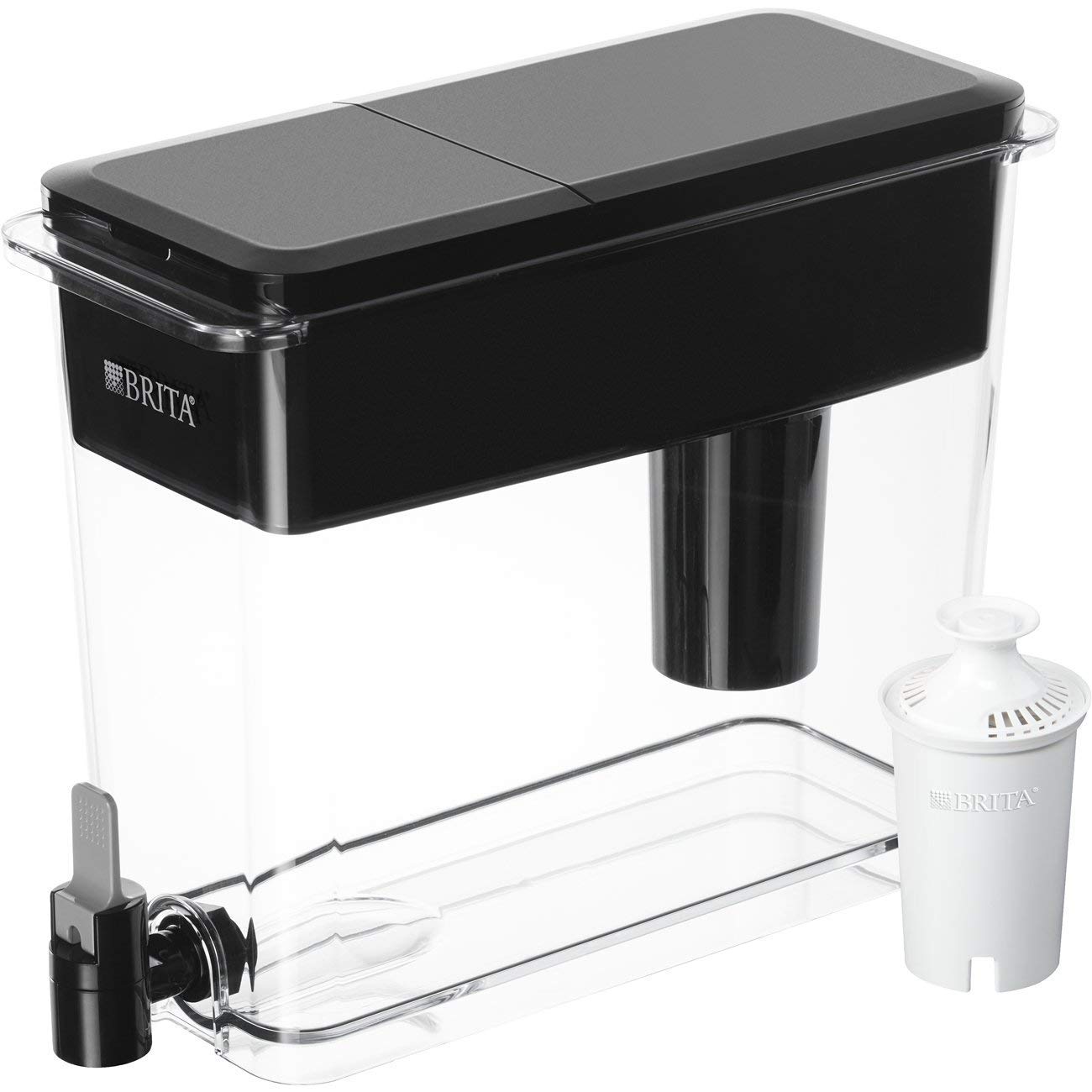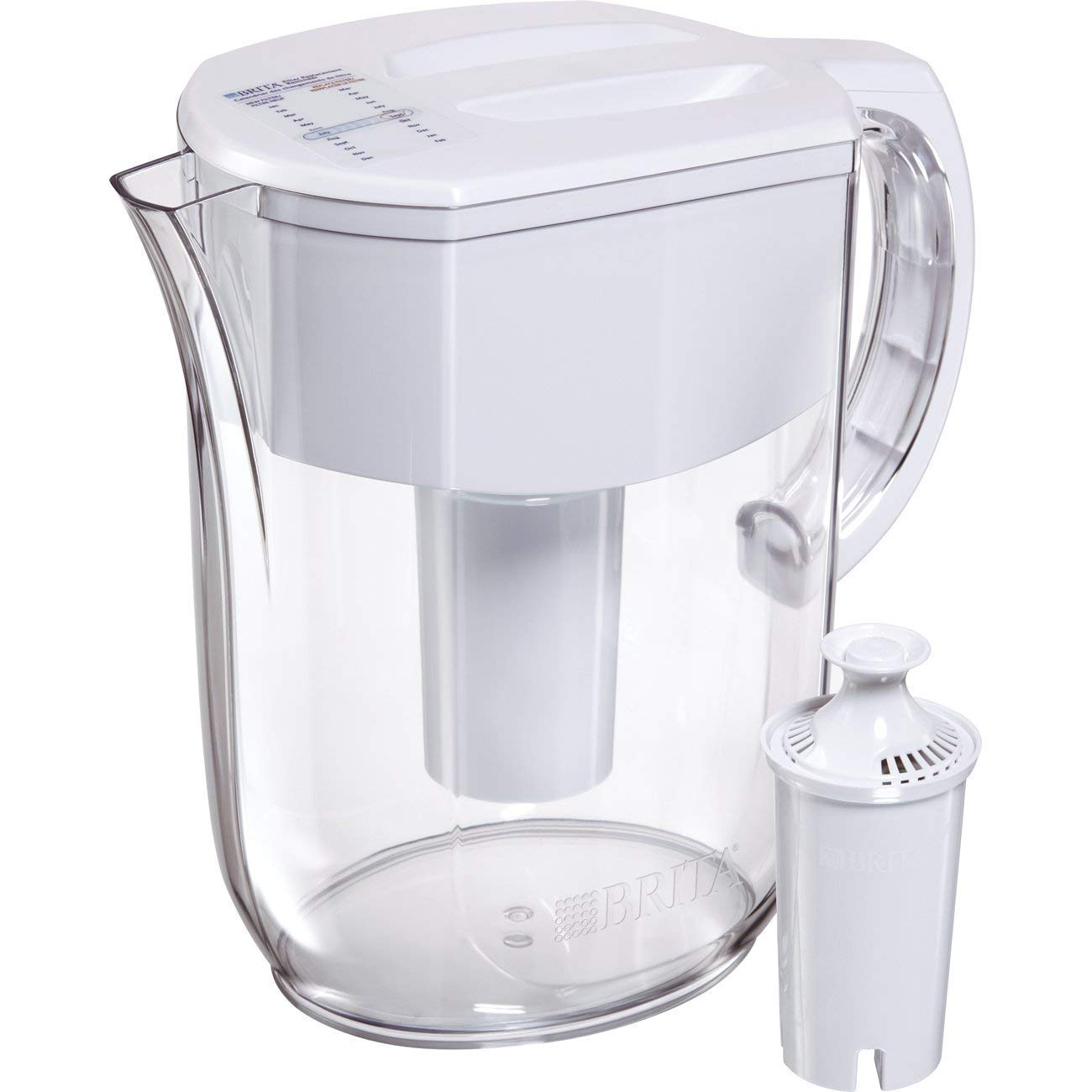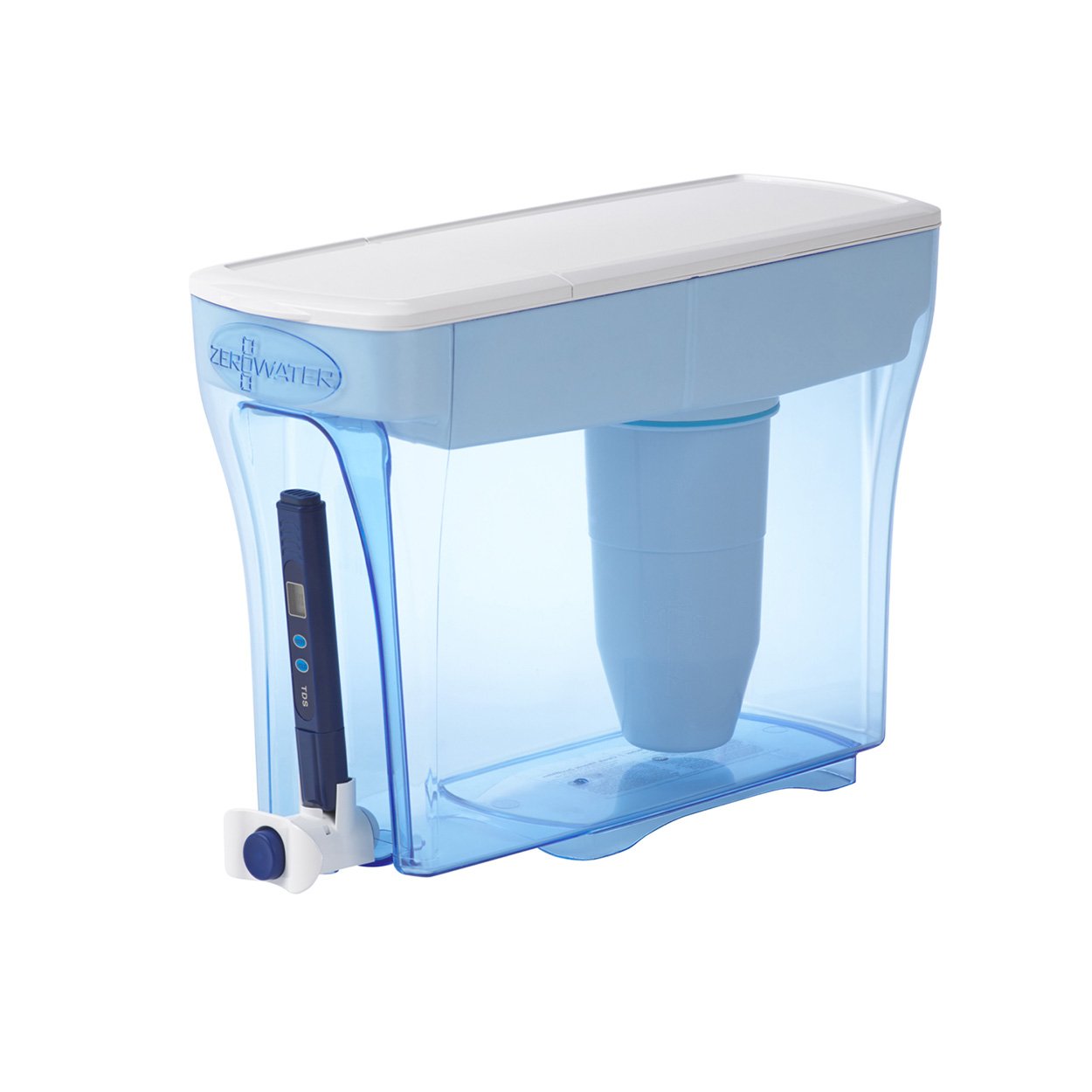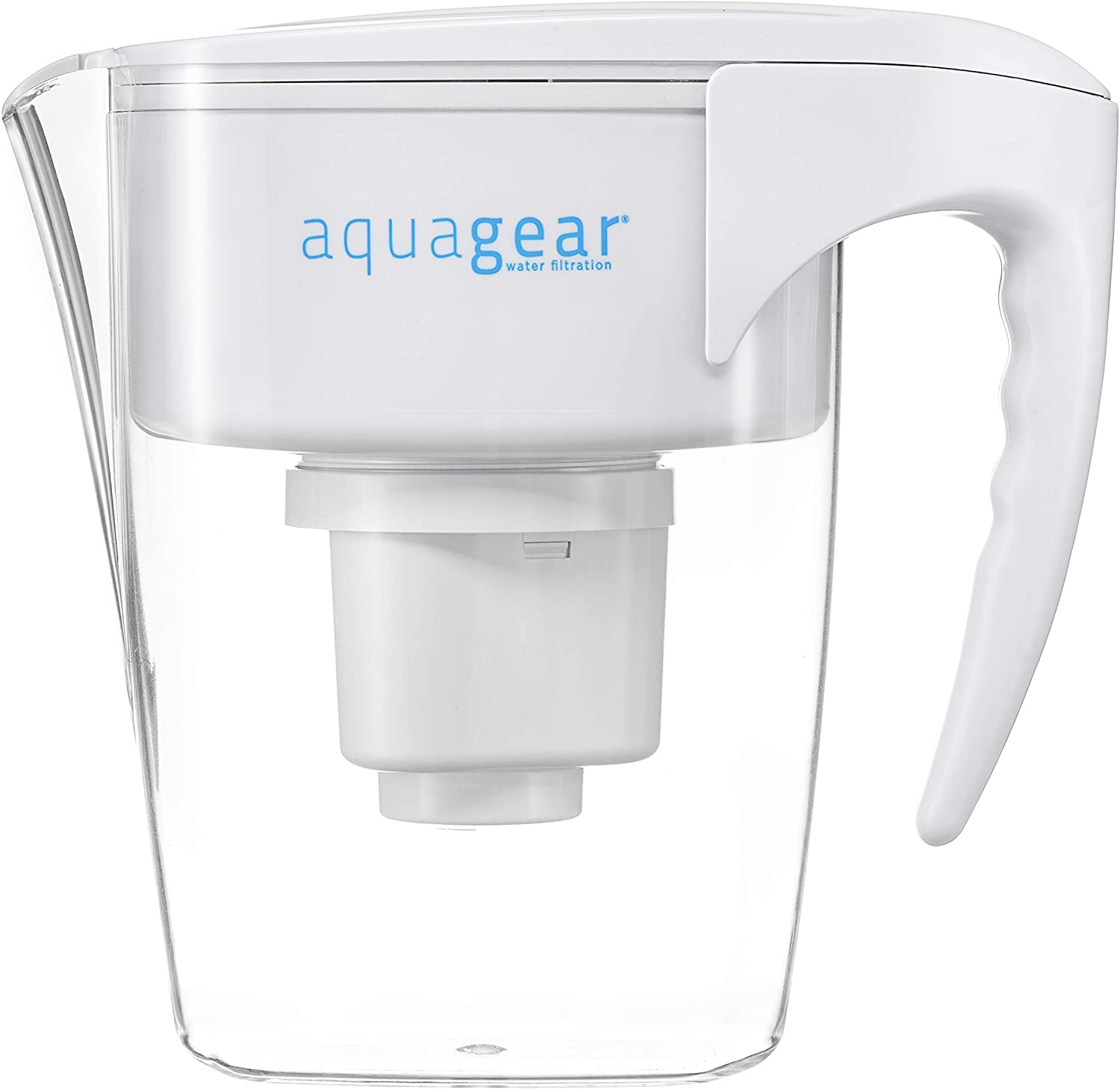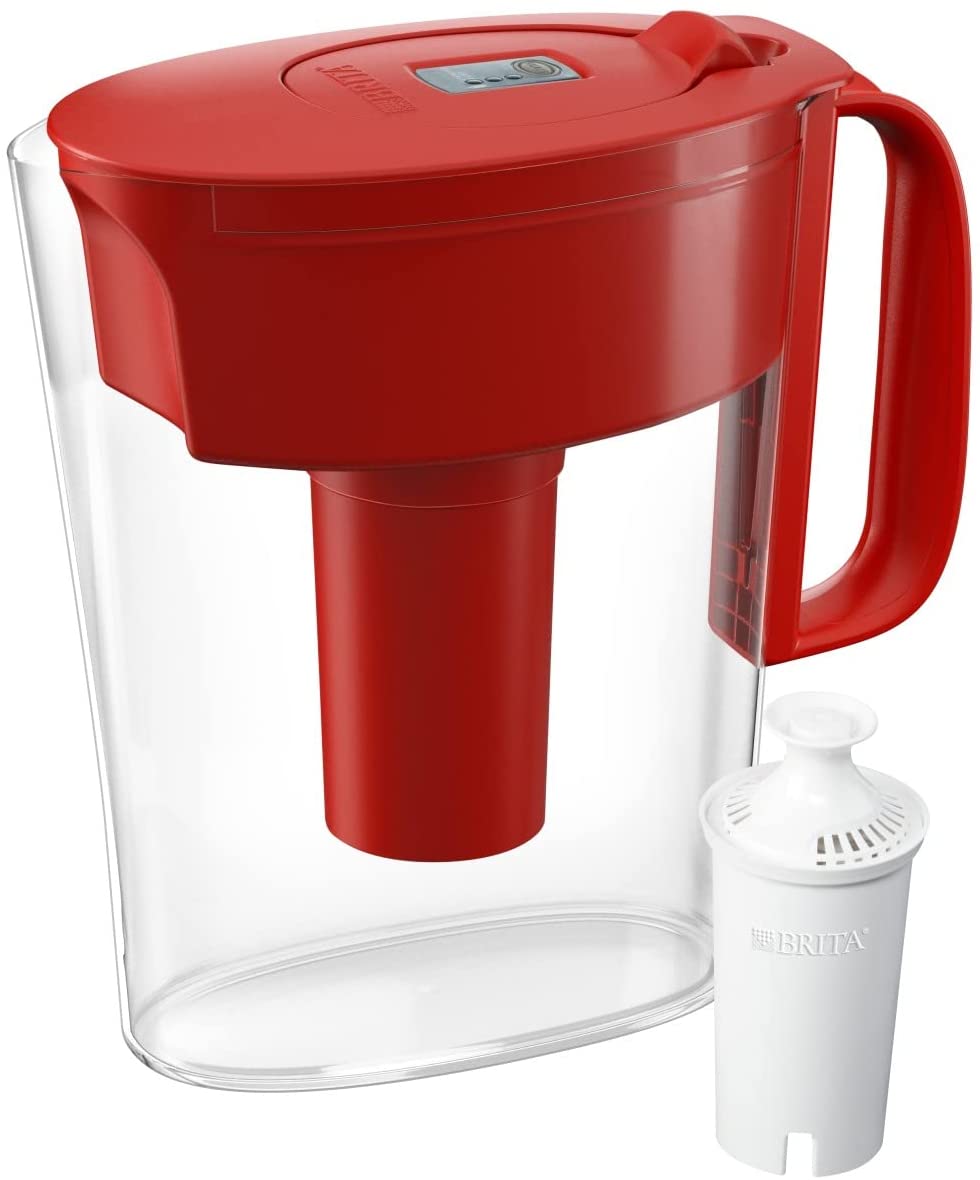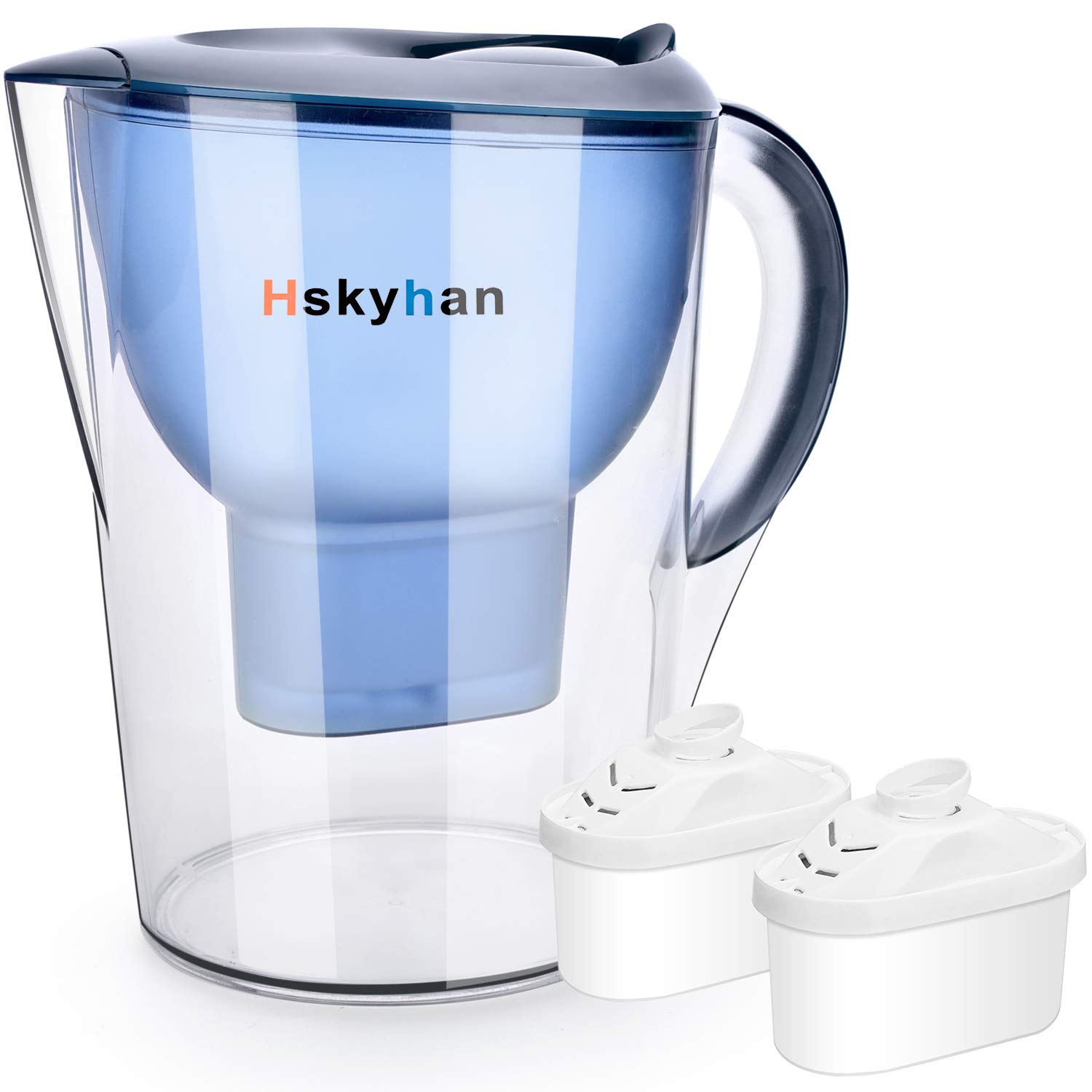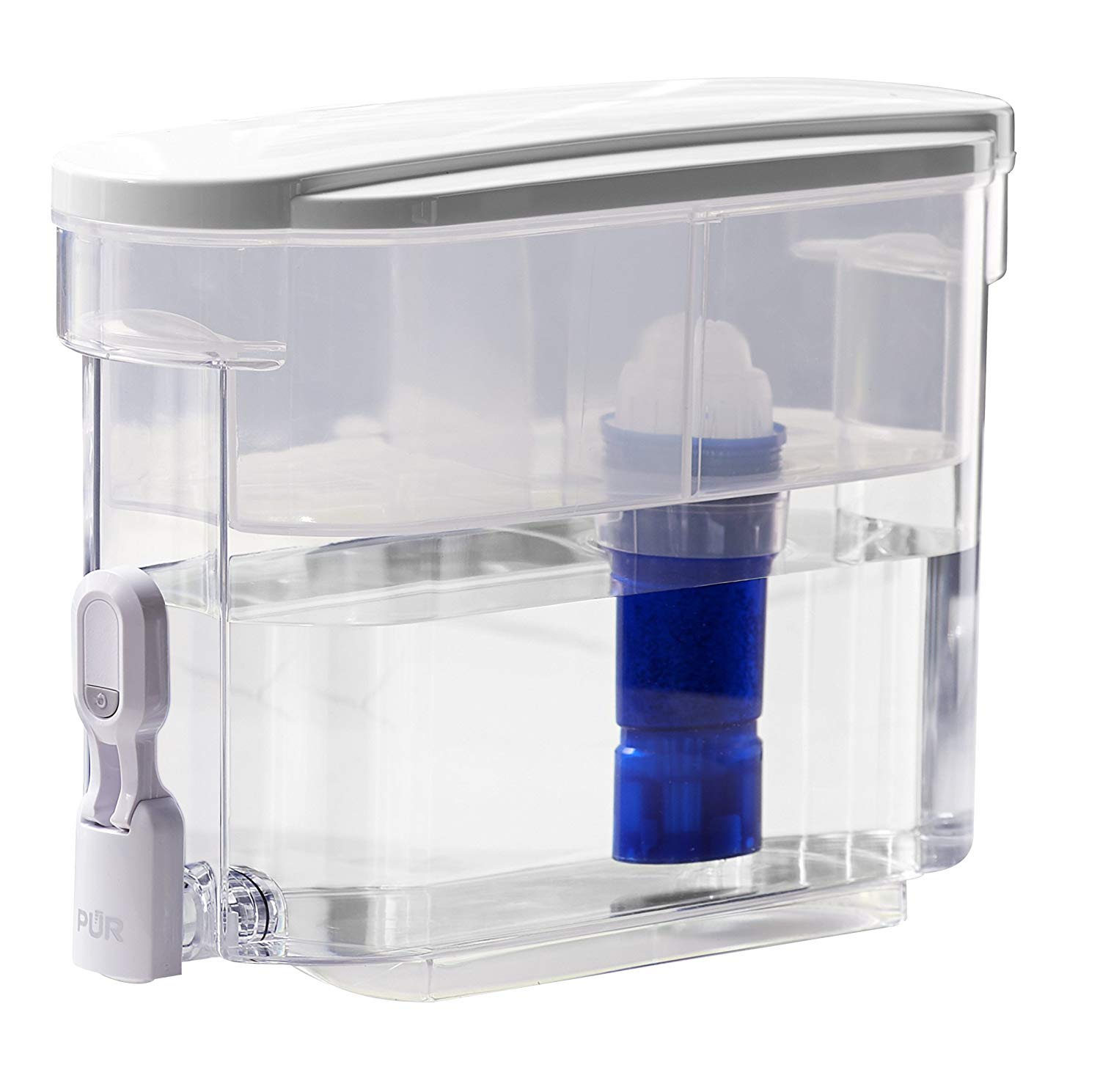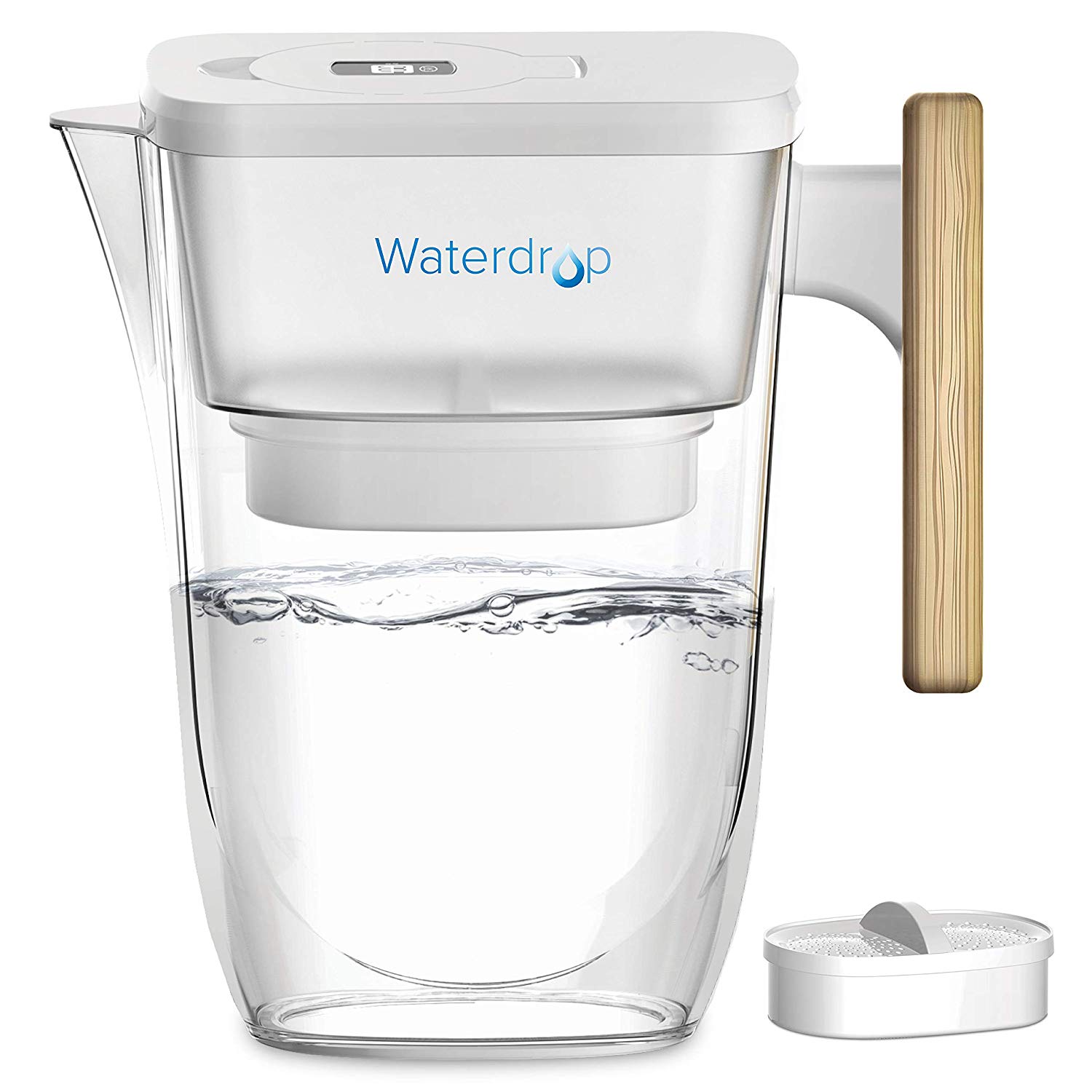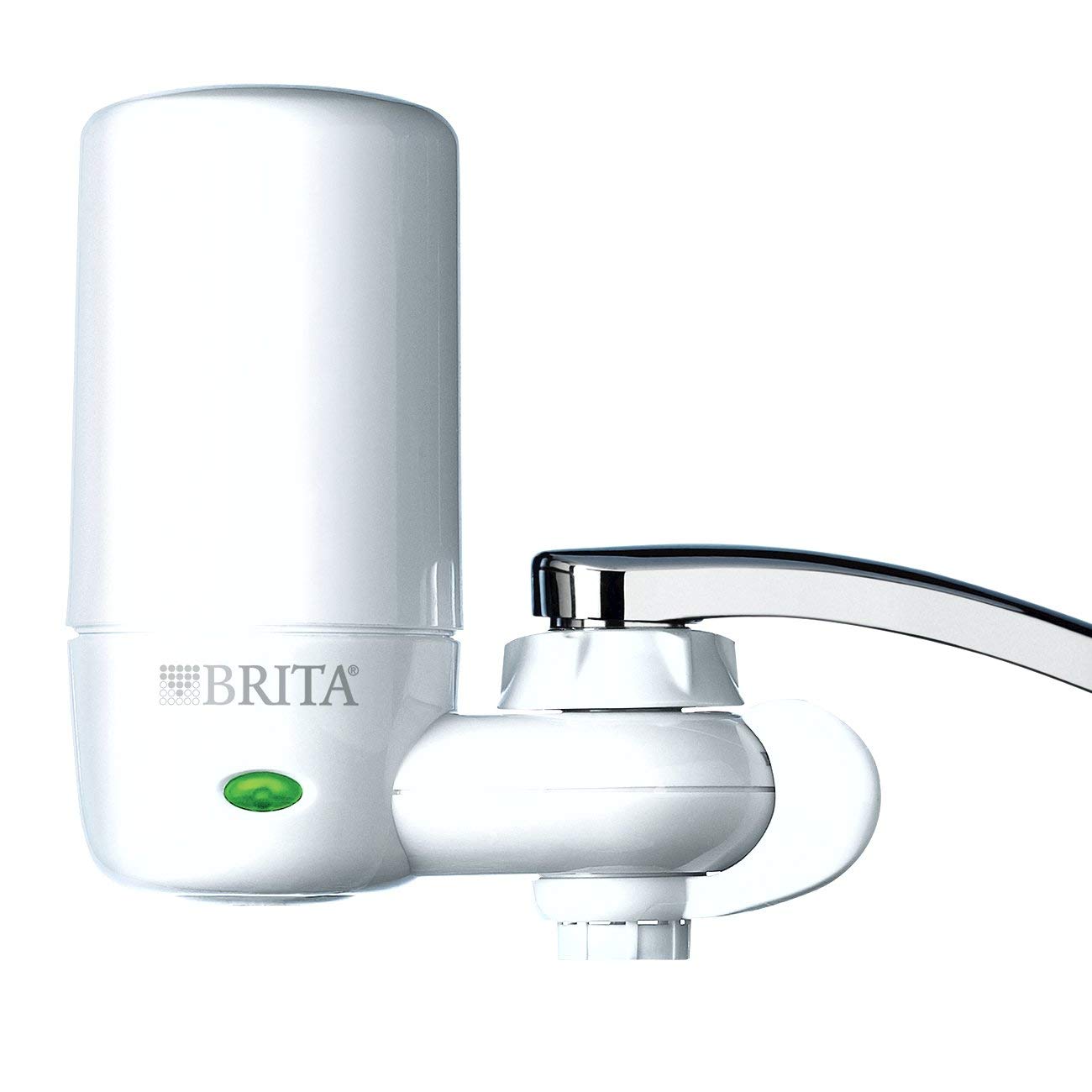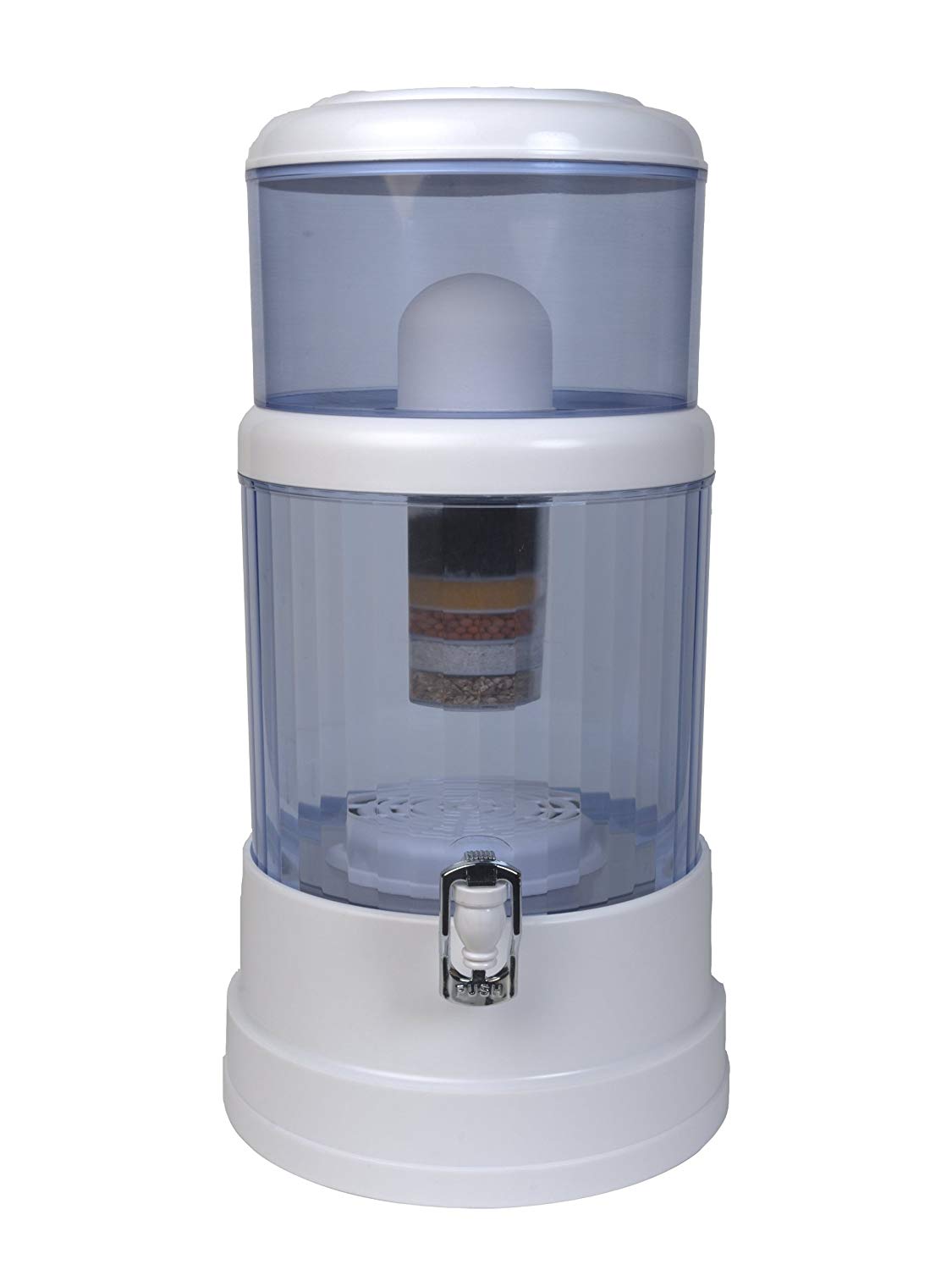It has enough capacity for most families’ daily use; even young children can use it; it makes efficient use of fridge space; and it lets you pour water while the filter is still working.
The Brita filters are able to reduce up to 99% of lead, as well as asbestos, cadmium, mercury, and other contaminants. The long-lasting filter can be used on 900 standard bottles (16.9 ounces each) of water before it needs replacing.
It is designed innovatively to fit on refrigerator shelves and countertops making good use of those spaces. Moreover, this pitcher features a spigot which allows for easy pouring and a flop top lid for easier refilling.
It features a spigot water dispenser which does the job of channeling water from the water dispenser to your glass much more effectively, thereby reducing the amount of water wasted.
Brita filters bring out the best and advanced technology for an enhanced tasting and drinking experience. Its pitcher filters cut the odour and taste of chlorine whereby reducing cadmium, mercury and copper impurities which could otherwise cause health issues over time.
Despite its size, the Brita is space efficient and fits neatly on countertops and refrigerator shelves. Rather than being ‘pitcher’ shaped, it is designed like a cube and measures 7.25 x 14 x 8.75 inches. Setting up the Brita is easy, requiring 15-seconds of flushing before installation. A flip top lid makes refilling a breeze, and a helpful sticker indicator helps users keep track of their last filter change.
This Brita water dispenser and filter is BPA-free. It lowers chlorine taste and odor, while taking care of copper, mercury and cadmium impurities commonly found in tap water.
It is free of BPA and comes with a marker filter indicator which shows you to tell when it is the time to change your filter.
The Brita Large 18 Cup UltraMax Water Dispenser and Filter is extremely easy to install and doesn’t require you to pre-soak it. It is also made of BPA-free plastic and has a 40-gallon filter life which equates to approximately 300 16-ounce plastic bottles.
Can hold more water than pitchers, streams and bottles.
Thanks to the sleek design, the dispenser can sit on your kitchen countertop without taking up too much space. Alternatively, you can keep it on a shelf in your refrigerator if you prefer to enjoy cold drinking water.
Refill – The Brita Large Water pitcher is very easy to refill. You can easily refill the water dispenser from the flip top lid. Refiling is never been easy before.
We can easily remove the chlorine taste and bad odors from our water using this dispenser. It will effectively remove the bad taste and provide us with great tasting water.
Telling when the filter needs replacement isn’t hard, thanks to the included filter change reminder. The reminder is basically a helpful sticker that will let you keep track of when you last change the filter, enabling you to easily tell when it’s time to change it again.
Every two months the system will indicate for you to change the filter. Refilling process is very easy.
The concept of having a larger vessel containing more amount of clean filtered water is great, the handy spigot makes sure that the whole thing doesn’t have to be removed every time for each use.
Highly effective filter which can be used for 2 months or more than 40 gallons per filter.
The dispenser features a lovely spigot that allows you to fill the glass, bottle, or cup easily and enjoy whether in the office or outdoors. To make the dispenser even easier to use, it is constructed with an electronic gauge meter that helps to monitor the rate of filter use so that it can be replaced when used up.
Overall design is sleek and trim, with an easy to use and wide spigot for quick filling of glasses at the flip of the nozzle. It is also unobtrusive enough to fit most kitchen designs, coming in white or black colors for countertop use instead of refrigerated use. Flip top lid is easy to fill in either situation.
This item is a transparent dispenser which is stylish and functional. It comes with a strong tap with an easy to access tap.
